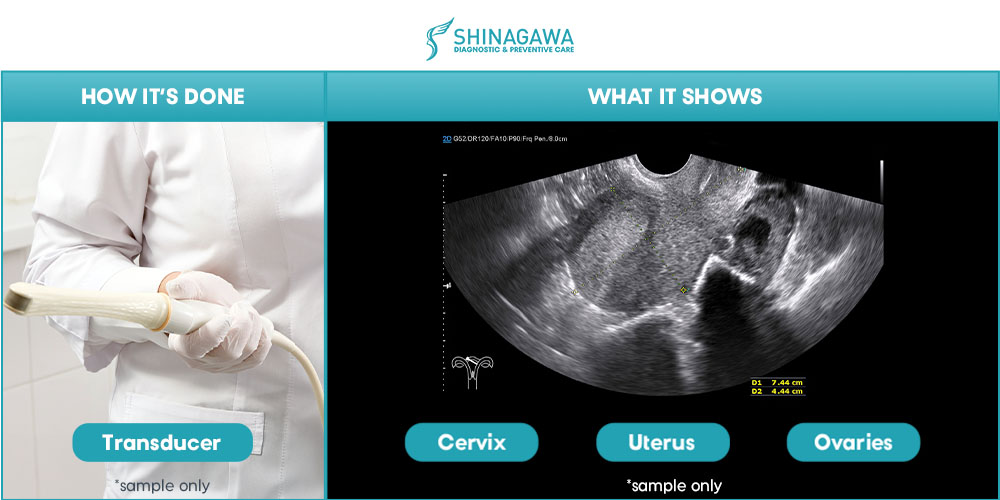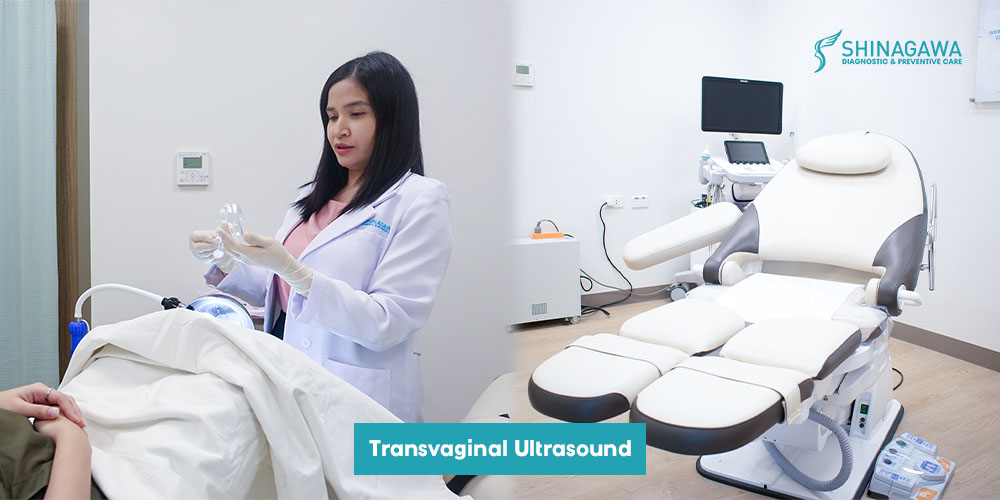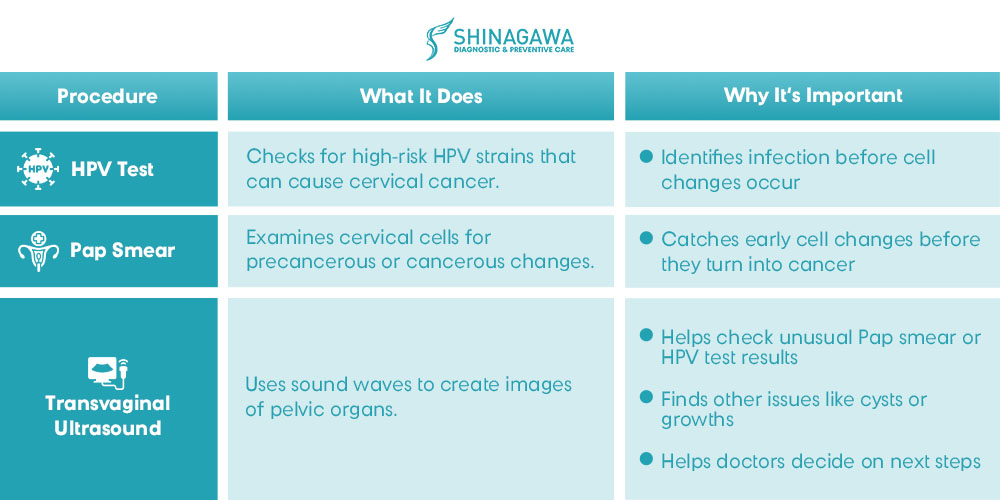Cervical cancer threatens women of all ages, yet many are unaware of the best ways to detect and prevent it early. In countries like the Philippines, where cases are rising, it’s crucial to know the key tools to address this growing concern.
The Transvaginal Ultrasound (TVS) is often linked to cervical cancer detection — but does it really serve this purpose? This article clears up the misconception, explains TVS’s actual role, and guides you toward the right screening methods.
What Is Transvaginal Ultrasound (TVS)?
A transvaginal ultrasound is a medical imaging procedure in which a small probe is gently inserted into the vagina to send sound waves and produce detailed images of the female reproductive organs, including the cervix, uterus, and ovaries. It is commonly performed to identify the cause of pelvic pain, abnormal bleeding, or to monitor ovarian cysts.

While safe and gentle, a transvaginal ultrasound is not a main screening test for cervical cancer. Instead, it’s used as a follow-up to check any unusual results from your first screening tests.
Screening vs Diagnosis vs Assessment: What’s the Difference?
Understanding the terms screening, diagnosis, and assessment can help clarify where TVS fits:
- Screening is done before any signs or symptoms appear, often using Pap smears and HPV tests. A Pap smear detects abnormal cells in the cervix, while an HPV test identifies high-risk virus strains that may lead to cervical cancer. Used together, they help detect the disease early or catch precancerous conditions before they develop.
- Diagnosis is done after an abnormal screening result or when symptoms like unusual bleeding occur. A transvaginal ultrasound helps by showing clear images of the cervix, uterus, and nearby organs, making it easier to see the size, location, and extent of any problems.
- Assessment or staging comes into play after a diagnosis of cervical cancer. At this stage, doctors use imaging like MRI, CT scans, or in some cases, TVS to see the tumor’s size, spread, and whether fertility-sparing treatment options might be needed.
When Is Transvaginal Ultrasound Actually Used for Cervical Cancer?
While a transvaginal ultrasound cannot detect cervical cancer on its own, it can be used after a confirmed diagnosis to help with the following:
- Tumor Measurement
Transvaginal Ultrasound helps measure the tumor’s size and depth. In some cases, 3D ultrasound can also show if cancer is close to other structures in the pelvis. - Evaluating Fertility-Sparing Options
For younger women hoping to preserve fertility, TVS helps determine if the cancer is small enough (typically 2 cm or less) and confined enough for less radical treatments. But this depends on the skill and equipment available—MRI may still provide more detailed information.
Get the right support you need with Shinagawa Diagnostic
For women aged 21 to 29, medical guidelines recommend undergoing a Pap smear at least once every three years to screen for cervical cancer. From age 30 onwards, it is advisable to combine the Pap smear with an HPV test, ideally every five years if both tests are available.
If you are already experiencing symptoms such as vaginal bleeding after intercourse, between periods, or after menopause, having it checked early can help lower risks and prevent further progression of the disease.
Regardless of your health status, Shinagawa Diagnostic & Preventive Care offers the essential services you will need to screen or detect signs of cervical cancer. Carried out with strict Japanese medical standards, we ensure both precise results and the highest level of patient comfort.

With cervical cancer as the third most common cancer affecting Filipinas, let us take control of our health by being aware and proactive. Start your preventive journey against cervical cancer today with Shinagawa Diagnostic.
Disclaimer: This article is for educational purposes only and does not replace professional medical advice. Please consult a qualified healthcare professional for an accurate diagnosis and treatment.
Citations and Resources
Shinagawa Diagnostic & Preventive Care is committed to delivering accurate, reliable, and up-to-date health information. All content published on our platform is grounded in evidence-based research and reviewed by qualified professionals where applicable.
To support our articles, we reference authoritative sources such as peer-reviewed medical journals, official health organizations (e.g., World Health Organization, Department of Health Philippines), and expert guidelines. Where appropriate, we also include data from trusted research institutions and clinical studies.
Our goal is to provide well-researched content that empowers you to make informed choices about your health, diagnostics, and preventive care.
Resources Used in This Article
- World Health Organization. “Cervical cancer, https://www.who.int/news-room/fact-sheets/detail/cervical-cancer”
- PubMed. “Accuracy of Transvaginal Ultrasonography for Staging of Cervical Cancer Patients: A Meta-Analysis, https://pubmed.ncbi.nlm.nih.gov/40047282/”
- Science Direct. “Staging by imaging in gynecologic cancer and the role of ultrasound: an update of European joint consensus statements, https://www.sciencedirect.com/science/article/pii/S1048891X24013343”
- Journal of Cancer. Updated applications of Ultrasound in Uterine Cervical Cancer, https://www.jcancer.org/v12p2181.htm”
Obstetrics & Gynecology. “The added benefit of transvaginal sonography in the clinical staging of cervical carcinoma, https://obgyn.onlinelibrary.wiley.com/doi/full/10.1111/aogs.13750”
Book an appointment now

Inquire

Book



